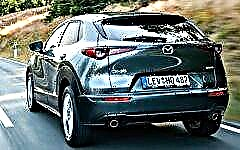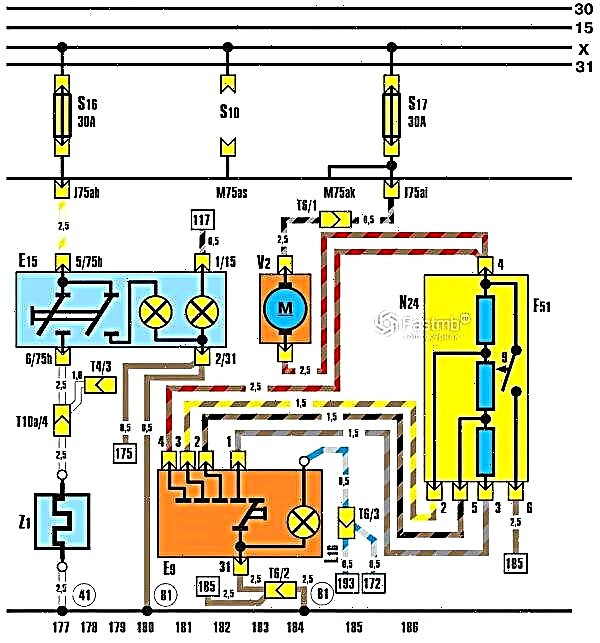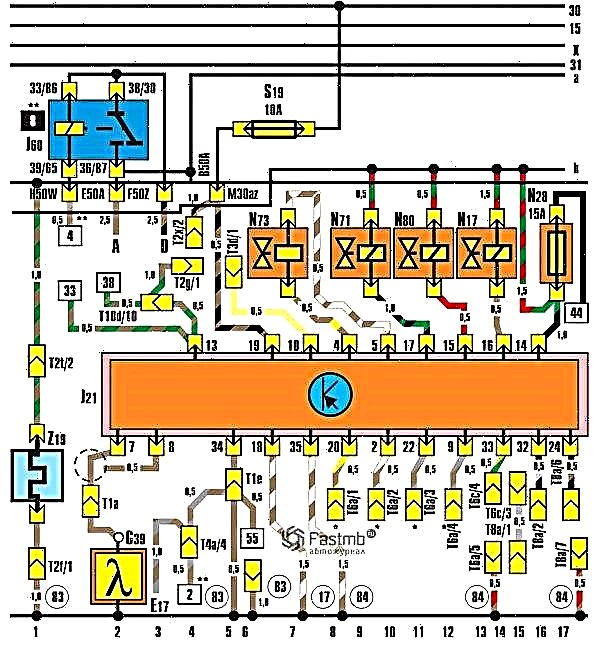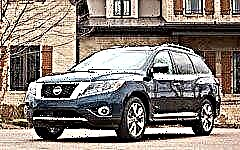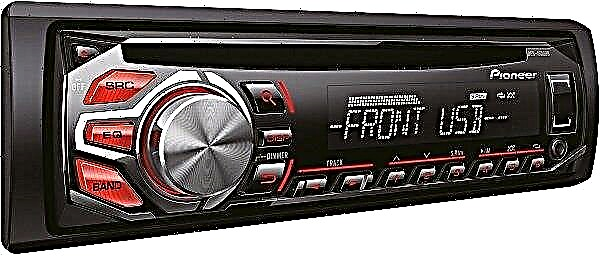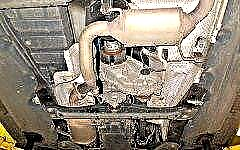

The content of the article:
- The essence of the process of functioning of the particulate filter
- Technological features of oil for diesel engines with a particulate filter
- How to choose
Diesel particulate filters have been used in all diesel engines since 2011, as well as in some older engines, when the installation of particulate filters was not yet mandatory. They have several abbreviations: "DPF" - English, "FAP" - French, "RPF" - German. But, they all mean the same thing - particulate filter.
The method of ignition of diesel fuel in a diesel engine is significantly different from the ignition of gasoline in a gasoline unit. (without the aid of an electric spark). There are no spark plugs in "diesel" (in the classical sense, as in a gasoline engine). In it, diesel fuel spontaneously ignites due to high pressure and rapid heating. Accordingly, for cleaning exhaust gases with this ignition method, a different filter is required than for the gasoline version, where a catalytic converter is used.
The main task of particulate filters is to maximize the purification of exhaust gas from environmentally harmful soot impurities. When used, the concentration of soot in the exhaust of a diesel engine can be reduced by up to 90%.
In addition to the operating mode of the engine and the quality of diesel fuel, the qualitative composition of the engine oil also has a great influence on the working condition of the particulate filter. Accordingly, it is necessary to choose an oil that will be suitable not only for the "diesel" itself, but also for its particulate filter.
The essence of the process of functioning of the particulate filter

- After diesel fuel burns out, deposits in the form of soot particles remain in the engine.
- During further operation, the soot particles are captured by the particulate filter, when the exhaust gas passes through it.
- The soot particles accumulated in the filter are periodically burned out of the filter during active and passive regeneration, as a result of which the device is self-cleaning from soot.
- In the pores of the particulate filter, non-combustible sulphated ash remains, which cannot be removed during regeneration. That is, over time, a critical mass of ash accumulates there, which clogs the pores of the filter, after which it ceases to perform its cleaning function and must be replaced.
If the particulate filter is critically clogged, the following problems arise:
- Alert (on the dashboard) of an exhaust problem due to a particulate filter.
- Reduces engine power and thrust.
- The engine starts to run unstable.
- The density and smokiness of the exhaust increases.
- The oil level rises.
- Fuel consumption increases.
- The floor in the passenger compartment is heated.
Technological features of oil for diesel engines with a particulate filter

For diesel units with particulate filters (as well as for gasoline units with catalysts), a special oil with low ash characteristics was created, using the Low SAPS technology (with a minimum content of sulphated ash, phosphorus and sulfur compounds). Engine oils based on Low SAPS technology began to be used after 2005, after the new environmental standards - EUROIV - were introduced in the European Union.
Sulphated ash is an incombustible residual product of combustion formed after complete combustion of mineral impurities of diesel fuel and oil. And it is the incombustible ash particles that finally clog the particulate filter over time, because the ash does not burn out.
The soot can burn out during regeneration (self-cleaning of the filter), but the ash will never burn out, and it will no longer be possible to get rid of it.
The sulphated ash content of engine oils depends on the amount of phosphorus and sulfur in their composition - the lower the content of these substances in the oil, the lower the ash content of the oil.
It is known that the composition of the oil must contain various additives, since any engine oil consists of a base oil mixed with certain additives. And at the heart of technologically outdated additives, especially detergents, neutralizing, extreme pressure and antifriction additives, there is a significant amount of phosphorus and sulfur.
That's why Low ash oils using Low SAPS technology contain a different type of additives, based on modern synthetic compounds that do not contain harmful sulfur and phosphorus components. At the same time, these additives protect engine parts as effectively and reliably as they do with ash.
You can find out about the degree of sulphated ash content of the oil by the name on the container label:
- "Low SAPS" (low ash) - up to 0.8%.
- "Mid SAPS" (medium ash) - 0.8 - 1.0%.
- "Full SAPS" (full ash) - more than 1.0%
Important! The most negative impact on particulate filters is produced by full ash oils marked: ACEA "A1 / B1", "A3 / B3", "A4 / B4", "A5 / B5". The ash content in such full-ash oils is within 1.1%, therefore they are not recommended for use in engines where ecological systems are used: "Euro 4", "Euro 5" and "Euro 6".
The lower ash content of the oil is also indicated by the ACEA marking “C1”, “C2”, “C3”, “C4”, indicated on the oil container. By the way, oil ash content (according to the ACEA classification) is limited by regulatory documents only in European production.
ACEA, class "C" (passenger cars): for "diesels" with a particulate filter, and gasoline units with a catalytic converter (catalyst):
- "C1" - oil for "diesel engines" with a particulate filter and gasoline units with a 3-component catalyst. Extends the service life of the exhaust gas cleaning system. Provides normal engine operation in difficult operating modes (frequent driving in the city and over short distances, trips to the mountains and driving on dusty roads, towing a trailer).
- "C2" - oil for diesel and gasoline engines with high performance. Differs from "C1" in different substances in the composition.
- "C3" - oil with low sulphated ash and low viscosity at high temperatures.
- "C4" - oil with low sulphated ash content and low phosphorus and sulfur content. Has a minimum viscosity at high temperatures.
| Name | Price, rub. |
| Ravenol Arctic Low SAPS ALS SAE 0W-30 1 L engine oil - synthetic motor oil; - package volume 1 l; - viscosity class 0W-30; - class ACEA C3; - engine: gasoline or diesel, four-stroke. | 1023 |
| AVENO FS Low SAPS 5W-30 engine oil 4 l - synthetic motor oil; - package volume 4 l; - viscosity class 5W-30; - API SN class; - class ACEA C3. | 1660 |
| Castrol Enduron Low SAPS 10W-40 engine oil 20 l - semi-synthetic engine oil; - package volume 20 l; - viscosity class 10W-40; - class ACEA E6, E7; - engine: diesel, four-stroke. | 5089 |
Important! The addition of any other additives (sold in stores) to the oil using the Low SAPS technology is prohibited! This leads to an increase in ash content and a loss of low ash properties of the oil.
How to choose

In the matter of choosing a motor oil, in addition to many different brands from different manufacturers, there are even more opinions, recommendations and misconceptions, which often do not facilitate, but only complicate the process. That's why when choosing engine oil, simple and proven methods are recommended:
- The easiest and surest way to choose the right oil for your diesel particulate filter engine is read the "Manual for repair and operation" of the car, where permitted brands of oils or their analogues are indicated. Moreover, such "Guides" are created in the form of training material, with the decoding of the letter designations on the marking - which letters and names correspond to which.
Also in the "Guide" there are enough various useful recommendations.For example: “It is not recommended to mix engine oils of the same type if they are of different brands. The use of oils of the same type and brands, but with different viscosities is allowed only as a last resort. " Or: “For efficient and long engine operation, it is recommended to use oils of the same brand, type and viscosity. It is better to record this data when changing the oil. " Etc.
- If you do not have the "Manual for repair and operation" of your car, then you can search for it on the Internet, in "pdf" format, or download it in another form. Also, the brands of oils recommended by the manufacturer can be found on some Internet sites by the VIN number. And finally, knowing the VIN number of your car, you can call the dealer and find out which oil can be used to modify your car and engine.
- The problem with information about the current brand of oil in the "Manual for repair and operation" may arise from those car owners whose cars were produced before 2005. The “manual” for these vehicles was produced taking into account the state of affairs with oils at that time. And, as mentioned above, Low SAPS oils appeared after 2005, after the introduction of new environmental standards in the EU - “EUROIV”.
Respectively, in the "Manual" printed before 2005, information about the "Low SAPS" oils that appeared later should not be (the manufacturer simply could not recommend what was not yet available). In this situation, the information above (ACEA classification with C grades) can be used when choosing an engine oil for an engine with a particulate filter.
- If you cannot find the oil recommended by the manufacturer on sale, then you need look for an analogue or oil with properties close to those recommended.
- The oils have the so-called "engine manufacturer approvals", for example: VW501.01. This tolerance is a very important parameter and serves as a specific quality standard that the engine manufacturer considers mandatory for the oil used in his engine. Similar tolerances can be found on the label of the liquid container. At the same time, the oil manufacturer can use such a tolerance on the packaging of his products only with the permission of the engine manufacturer. The necessary tolerances for selection can be found in the same "Vehicle Operation and Repair Manual" (or in the service book).
- When choosing an oil, you should always remember the most important factor - condition and serviceability of the engine... Even the most modern and "wonderful" oil will be ineffective if it is used in an old, badly worn out or faulty power unit. Moreover, if the engine has a lot of liquid (there will be increased consumption), then even the lowest ash oil can harm the particulate filter and the entire exhaust gas cleaning system. A worn out or faulty engine that consumes a lot of oil "kills" the exhaust system, with the turbine, valves, filters and many other parts of the engine.
Conclusion
When choosing a product, it is recommended not to complicate the process by studying large amounts of information and recommendations from "seasoned and experienced" drivers, whose advice sometimes turns out to be not only useless, but also harmful. Here everything has already been chosen before us and for us by manufacturers, developers and designers.
The modern level of the automotive industry is so high that hardly even the most experienced drivers with many years of experience know more than specialist manufacturers, developers and laboratory testers. All that is required from the driver when choosing an engine oil is to find and use the manufacturer's recommendations already available.

